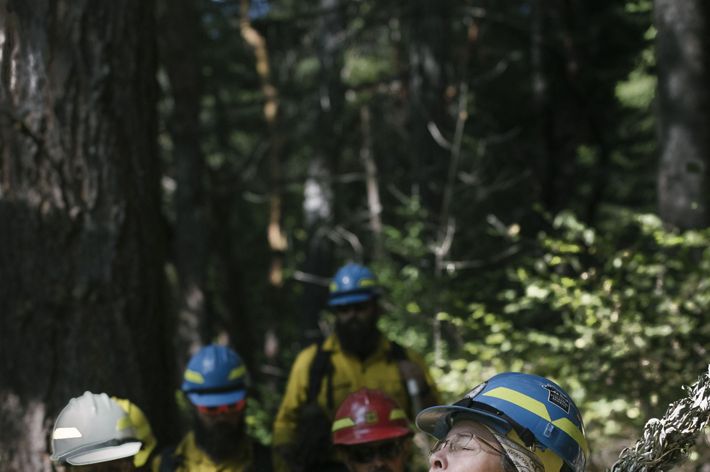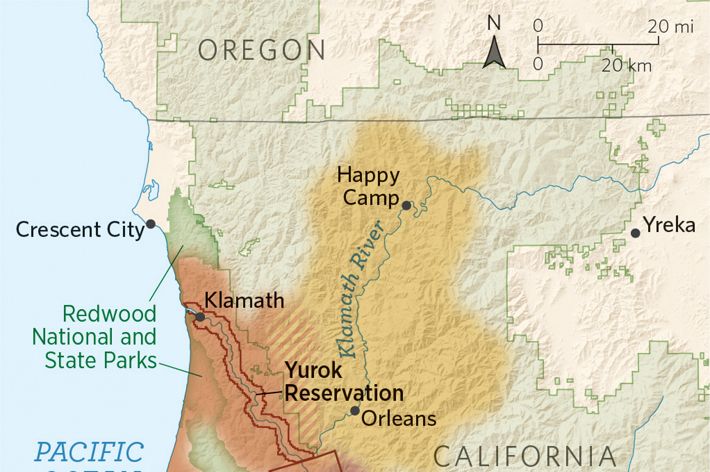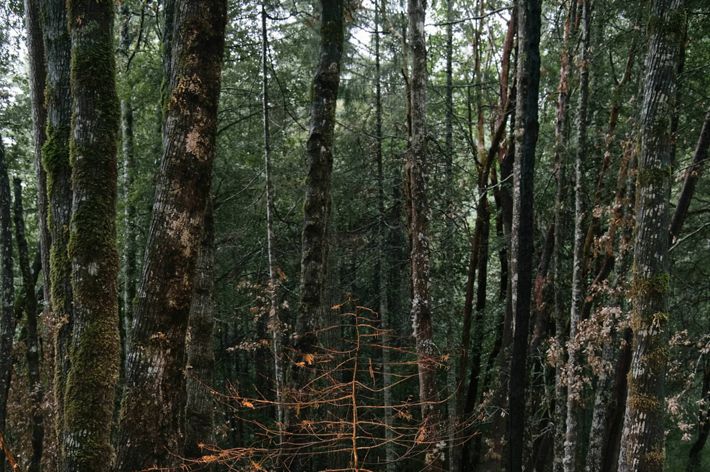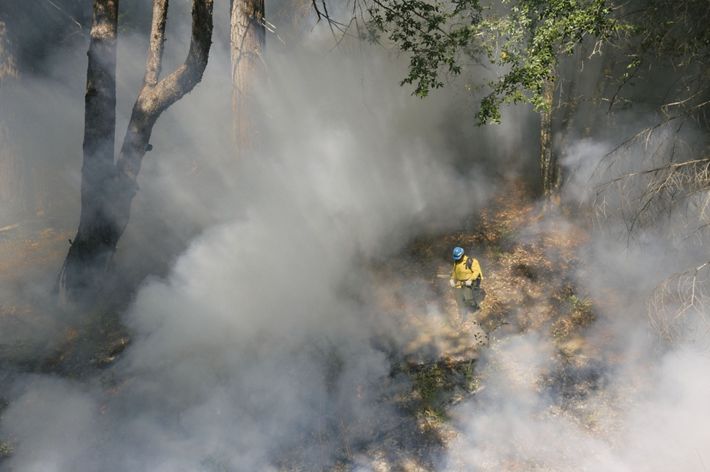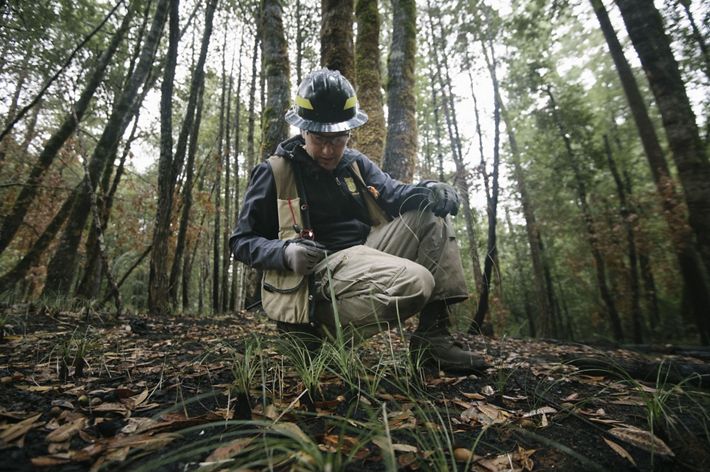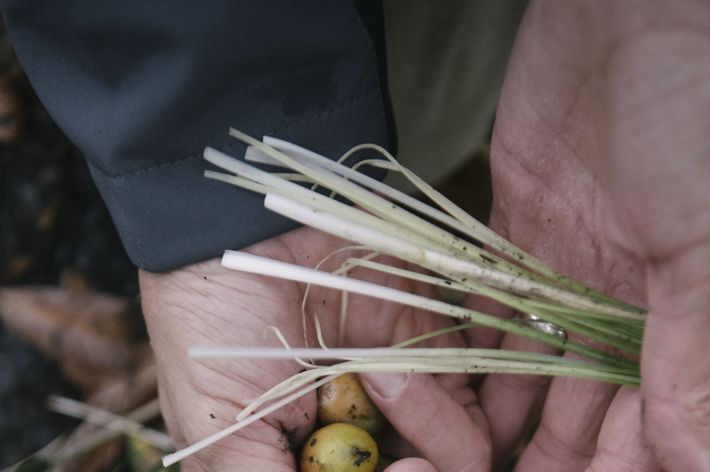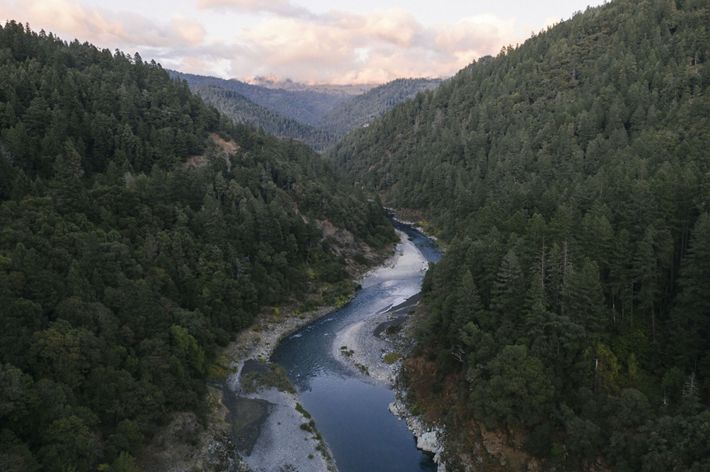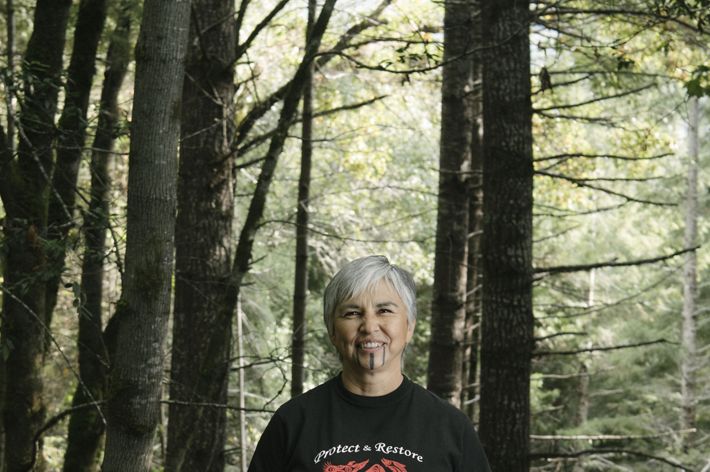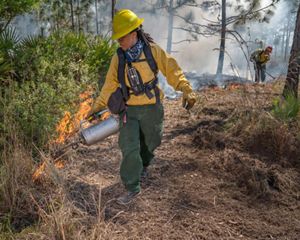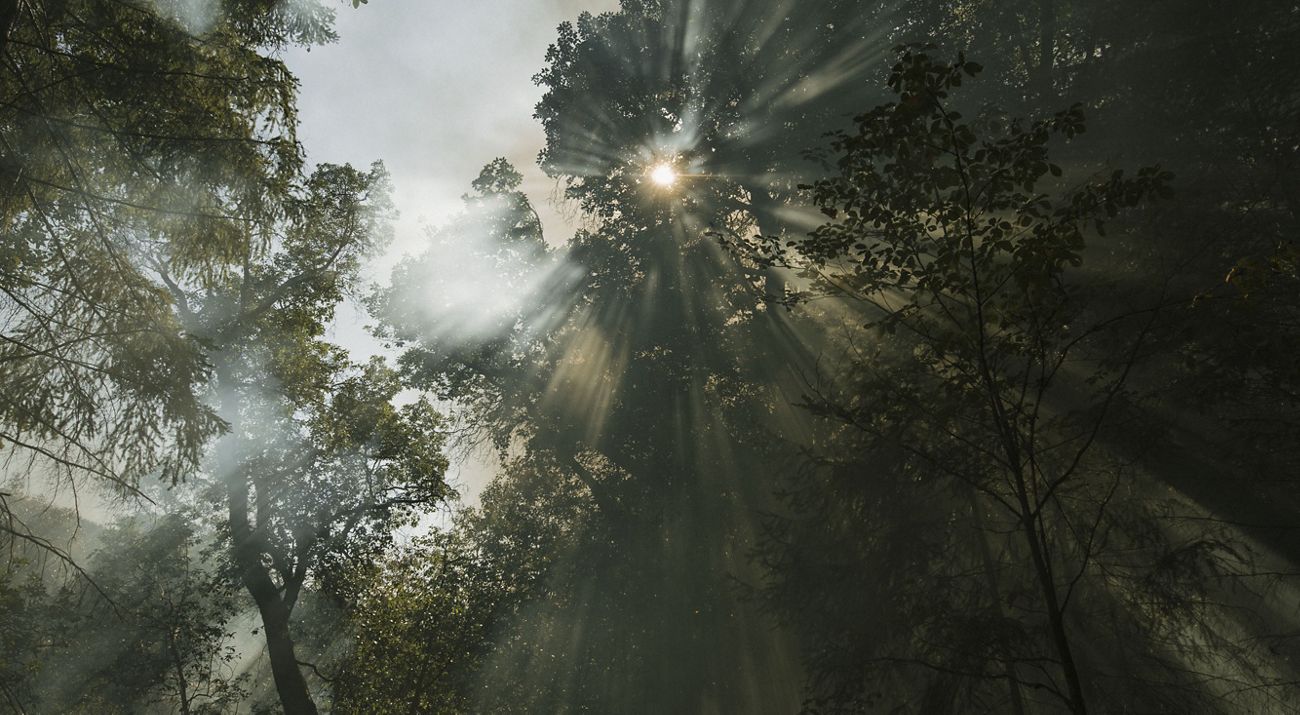
Quiet Fire
Indigenous tribes in California and other parts of the U.S. have been rekindling the ancient art of controlled burning.
Winter 2020

In 2011, Margo Robbins was about to become a grandmother for the first time. Her oldest daughter was having twins and, as a member of the Yurok Tribe, Robbins was determined that they would be carried in traditional baby baskets.
“In order to do that, I needed to have hazel,” says Robbins, who lives on the Yurok Reservation along the Klamath River in Northern California. “But there hadn’t been any cultural burns in many, many years.”
The intricate baskets—shaped like a cupped palm, with a seat to cradle a babe—are woven with hazel. And hazel needs fire. Without it, the shrub grows in a tangled bush. After fire, hazel grows in long, straight stems that can be used for the basket frame.
Get the Magazine
Become a member of The Nature Conservancy and you'll receive the magazine.
Subscribe nowIndigenous people have been practicing controlled, deliberate burns in North America, and around the world, for millennia. For the Yurok, Karuk and Hoopa Tribes of Northern California, human-managed fires across their traditional lands are vital. They promote the growth of traditional food sources, like acorns, and basket-weaving materials, like hazel. The fires even support the life cycles of salmon.
Between lightning strikes and Indigenous burns, most landscapes in North America were shaped by fire, and many landscapes need it. But for most of the 20th century, U.S. federal fire policy was guided by a strategy of fire suppression, designed to protect watersheds, communities and commercial timber supplies.
Without moderate or low-intensity burns to clear fuel, landscapes became primed for more destructive wildfires. And with increased temperatures and lower humidity caused by climate change—California has seen a 2.7-degree Fahrenheit increase since the early 1970s—this year saw record wildfires across the Western states. At press time, the 120,000-acre Red Salmon Complex Fire raged near the Hoopa Reservation, while the 150,000-acre Slater Fire had burned 150 homes in Karuk territory, killing two people.
Fire-suppression rules have sharply curtailed the ability of Indigenous communities to conduct traditional burns. Native Americans still face persecution and penalty when they try to use fire in line with their traditions—even on public lands where they often hold treaty rights to hunt, fish and gather. On reservations, Indigenous practitioners could also be subject to federal fire restrictions.
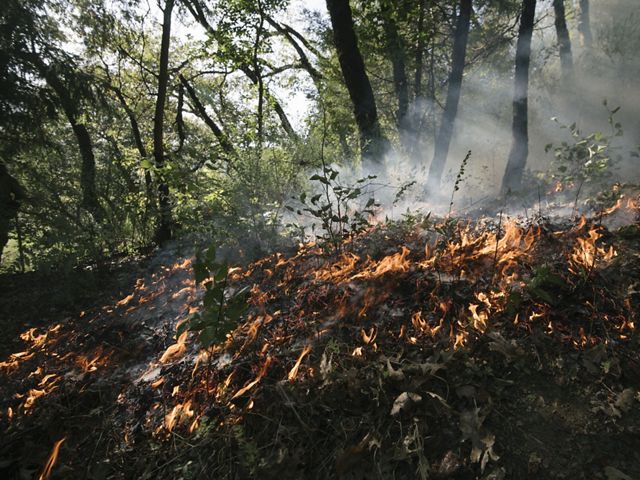
Over time, the U.S. policy caused a devastating rift in the way many Indigenous people relate to fire. “Without being able to freely engage in our cultural burning practices, we lose our culture,” says Bill Tripp, director of Natural Resources and Environmental Policy for the Karuk Tribe. “We can’t teach someone how to make a basket if we don’t have the materials that are pliable enough to make them. And we can’t access our food resources. We lose our salmon, we lose our acorns, we lose all those things, and we don’t have a culture. We just slowly disappear.”
But restoring cultural burning practices isn’t a simple task. While there is increased recognition for how past policies of fire suppression destabilized U.S. landscapes and cultures, and an understanding that controlled burns are one of the best methods to limit catastrophic wildfires, the dominant fire agencies and regulatory frameworks today still pose significant hurdles to the setting of cultural fires.
“People have become disconnected with the land and fire,” says Robbins, who now serves as executive director of the Cultural Fire Management Council, a community-based organization that seeks to facilitate cultural burns on the Yurok Reservation and surrounding ancestral lands. “And they’ve forgotten, or perhaps because there has been a generational assault on who we are, perhaps they never knew who we [were] and who we’re meant to be.” But it doesn’t have to be that way, she says. “Fire has the ability to reestablish that connection.”
Because Yurok tribal members had been separated from fire, because much of their ancestral territory is held by the U.S. Forest Service and state and national parks, and because suppression, development and climate change caused such dramatic changes in the forest, Robbins and her community were going to have to get creative to save their fire-dependent culture. To reclaim their right to use fire, they would forge relationships with other tribal partners as well as land-management agencies and nonprofits. And in the process, something bigger was born.
Quote: Margo Robbins
People have become disconnected with the land and fire. And they’ve kind of forgotten, or perhaps because this has been a generational assault on who we are, perhaps they never knew who we [were] and who we’re meant to be.
Reviving Nature and Culture
In 2013, the community took a major step toward their goal when they set out to work with the California Department of Forestry and Fire Protection (CAL FIRE) on a small burn on Yurok ancestral lands. CAL FIRE workers and the Yurok Tribe Wildland Fire Department burned seven acres. The tribe and the local community were ecstatic. For the first time in many years, there was hazel for weaving baby baskets.
Around the same time as that small fire, Robbins and others participated in a communitywide assessment of Yurok tribal members’ greatest priorities and needs. Despite myriad other concerns, bringing back fire was number one on that list. Paired with the CAL FIRE burn, this finding spurred Robbins and three other tribal members to form the Cultural Fire Management Council, a community-based nonprofit organization working to restore fire to ancestral Yurok lands. But despite their deep desires, the question of how to put fire back on the ground, and specifically in the hands of Indigenous fire practitioners, remained unanswered.
Then founders of the Cultural Fire Management Council, including Robbins, met Jeremy Bailey, director of prescribed fire training for The Nature Conservancy. He was actively expanding a training and exchange program called TREX as part of a longstanding collaboration between TNC and the Forest Service. The program hosted cooperative burns that brought together people from diverse backgrounds to learn about working with fire from one another, with the goal of expanding the pool of trained people who can safely restore fire to landscapes that depend on it.
Quote: Frank Lake
That’s what our elders wanted. They wanted us to come together to care for those trees, to not fear fire but to revere and respect it.
By May 2014, organizers with the Cultural Fire Management Council were hosting the first Yurok TREX, which brought fire practitioners and firefighters from all over the United States and other nations together with members of the Yurok and nearby tribes. The training exchange helped the Yurok Tribe meet some of the legal requirements for conducting a prescribed burn—like having authorized burn bosses and extensive firefighting equipment on hand. Indigenous fire practitioners burned alongside Western-trained fire practitioners, and everybody learned more about working with fire. Part of the ethos of the training exchanges, says Bailey, is a commitment to use fire safely, despite the many legal and administrative requirements that often stand in the way.
“What we have really tried to do is put something on the calendar months ahead of time and just start driving for it,” Bailey says. “Meeting a person like Margo [Robbins] made it that much easier to put something on the calendar and say yes, because you could hear the need and the passion in her voice, and in her request, and how much she wants fire.”
Frank Lake, a Karuk tribal descendent and a research ecologist with the Forest Service, remembers a 2015 TREX session and the intergenerational learning that it promoted.
Describing the scene five years later still brings Lake to tears. He remembers looking up at one point during the burn to see his son hand in hand with one of the burn bosses. “That’s what our elders wanted. They wanted us to come together to care for those trees, to not fear fire but to revere and respect it, and to fulfill our responsibility,” Lake says. “It was a form of justice, after so long of that forest not having fire.”
Since 2014, the Cultural Fire Management Council and the Yurok Tribe have hosted two TREX sessions every year, and trained 21 tribal members. They constitute a local workforce with paid jobs who can safely manage fire and help community members with “family burns” near their homes.
Although the Yurok people made significant progress, achieving the scale of burning required to restore the landscape and meet the cultural needs of the Yurok, Karuk and Hoopa Tribes still poses a huge challenge. Across the western United States, the amount of prescribed fire needed to significantly reduce the risk of catastrophic wildfire far outstrips the number of acres currently being burned and the available pool of trained professionals to do it. Addressing the shortage of fire workers is critically important, and TREX sessions in California and beyond are making a big difference. Just as important, TREX organizers emphasize the need to listen to and learn from a diversity of perspectives—thus helping to shift the culture of wildland fire management itself.
Connecting Communities with Fire
Today there is ample science supporting the use of prescribed fire and a growing body of research pointing to the role Indigenous communities play in landscape management. Such findings prompted the Forest Service to begin to consider the role of cultural burns in its plans.
These shifts, paired with the growing number of annual TREX events in California, spurred a greater question for TNC’s North America fire team: What would it look like if a network of Indigenous people across the United States came together to broaden the fire systems that are in place?
Quote
Indigenous burning was the original fire system in North America, and should be a component of any attempt to solve wildfire problems.
To begin to answer the question, Bailey and TNC fire ecologist Mary Huffman sat down in 2015 for a two-day listening session in a cabin with leaders from the Karuk, Yurok and Hoopa Tribes.
“What we did know was that there seemed to be an appetite for tribes to affirm, maintain or strengthen their fire cultures,” says Huffman. Indigenous burning was the original fire system in North America, she says, and should be a component of any attempt to solve wildfire problems.
During their time together at the cabin, tribal leaders laid out principles for a support network among Native American communities that want to revitalize their fire cultures. And from those meetings the Indigenous Peoples Burning Network (IPBN) was formed.
Since 2015, the IPBN has grown to include tribes and pueblos in New Mexico, Minnesota and Oregon. Huffman, Robbins and Lake are joined in the IPBN by Tripp, of the Karuk Tribe, and other Indigenous leaders.
One of the ultimate goals of the IPBN, which is administered by TNC and receives financial support from the Forest Service and the Office of Wildland Fire at the U.S. Department of the Interior, is to support tribes in their self-determination and self-sufficiency when it comes to fire.
Quote
The tribe was ecstatic. For the first time in many years, they had hazel.
“They never tried to step in and take over, and act like they know it all,” Robbins says of TNC. “It has just been a really, really good relationship in walking this path of reclaiming our fire culture. Not just with TREX, but with the Indigenous Peoples Burning Network.”
Robbins wonders about the impact IPBN could have at a larger scale, and what other tribes might see as the challenges and the opportunities.
“I don’t know this as a fact, but I would guess that almost all tribes in the U.S. had a fire culture, and that it’s possible to reclaim that culture—to reclaim that right to use fire,” she says. “I think another important piece is that the use of fire should be put back into the hands of all people. People need training in how to do it safely, but there’s so much land that needs to be taken care of and there’s no way the agencies can do all that. Let’s all pitch in.”
Get the Magazine
Sign up to become a member of The Nature Conservancy and you'll receive the quarterly print edition of the magazine as part of your membership.
